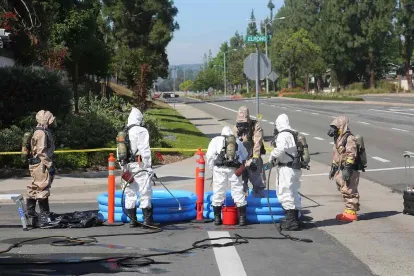On February 10, 2021, Minnesota announced its “PFAS Blueprint“, a 191 page aggressive plan with its stated goal being to “protect our communities and environment from [PFAS].” The detailed plan sets out a proposal to bolster regulations regarding PFAS through both legislation and agency rulemaking efforts. The PFAS Blueprint lays out ten priority areas of focus for PFAS, and supporting proposed legislative action to accomplish each priority. If carried out in full, or even in part, the impact of the regulations will be felt well beyond Minnesota, as other states that are more aggressively addressing PFAS issues will follow suit. The ripple effects on downstream commerce sectors, including waste management, water utilities, manufacturing and construction, will be enormous.
What Is The PFAS Blueprint?
The PFAS Blueprint identifies ten regulatory priorities for the state with respect to PFAS, including risk assessment from PFAS in air emissions and waste, remediating sites contaminated with PFAS and additional steps to prevent further PFAS pollution. Unlike other PFAS plans put forth by agencies, though, the Minnesota plan lays out specific legislative actions, which they propose take place in 2021, in order to accomplish the goals. Key among those legislative actions would be:
-
Designating PFAS as a “hazardous substance” under the Minnesota Environmental Response and Liability Act (MERLA);
-
Mandating that companies disclose information regarding PFAS use in products or manufacturing processes;
-
Targeting PFAS contamination remediation on landfills, composting facilities, and wastewater treatment plants;
-
Establishing required groundwater monitoring for PFAS at landfills; and
-
Consideration for product labelling for PFAS composition.
While the state pledges in its PFAS Blueprint to provide financial and technical support to businesses that cease using PFAS and utilize substitutes, the impact of the proposed legislative actions will have enormous impacts on businesses of many types.
Business Impacts of the PFAS Blueprint
Similar to the proposed “hazardous substance” designation under the federal Comprehensive Environmental Response, Compensation and Liability Act (CERCLA), the most notable impact of the Minnesota PFAS Blueprint will be felt by industry if the state designates PFAS as a “hazardous substance” at the state level. Once a substance is classified as a “hazardous substance”, the state can force parties that it deems to be polluters to either cleanup the polluted site or reimburse for the full remediation of the contaminated site.
A common misconception about the potential PFAS designation is that companies that are not directly discharging PFAS into riverways or managing a landfill in which PFAS are being discarded do not have to worry about the “hazardous substance” designation. This is a misconception that could cost some companies millions of dollars.
Consider the example of a plastics recycling facility. The company accepts recyclable plastics, runs them through its recycling process and machinery, and typically sends raw materials back to plastic manufacturers so that more plastic can be produced. On its surface, the recycling facility is not involved whatsoever with PFAS. Consider, though, that in the recycling process, large amounts of water are used. Is the company certain (or has it even tested) that the water coming into the facility is free of PFAS? Likely not, yet the effluent from the recycling process must be discarded, potentially into local waterways. A “hazardous substance” designation will require companies discharging PFAS into waterways to report those discharges if the discharges contain sufficient levels of PFAS. If violations are found, intent may matter in terms of the severity of a penalty, but it will not be an absolute defense. Violation notices could result, putting the company at risk for the costs of cleanup of downstream drinking water contamination or penalties.
Taking the example further, though, recycling facilities also generate solid waste – scrap from the products they buy that are either unusable or that simply become unusable during the recycling process. These byproducts must be discarded and are typically sent to landfills. But what if the products that are purchased by the company to recycle are already contaminated with PFAS? Or, if not, what if they become contaminated with PFAS by the water used in the recycling process? The company is sending PFAS-contaminated products to landfills that the state of Minnesota, having designated PFAS as a “hazardous substance”, will take a heightened interest in. If the landfill is owed by the company, then the state has an easy target for pursuit of legal / compliance / cleanup cost action, which can range from a few million dollars to tens of millions of dollars.
This example may seem farfetched, yet companies must recognize the fact that state-level arms of the EPA are under immense pressure to act on the issue of PFAS. Regulatory agencies will pursue any avenue possible to obtain costs from parties that are potentially responsible for costly cleanups. The reach of the regulatory agencies will extend well beyond simply PFAS manufacturers themselves.
While the above examples are prime targets for enforcement or remediation action under the proposals put forth in the PFAS Blueprint, numerous industries must pay similar attention to the proposed legislation, including textile, paper product, paints and mastics, solvents, and construction industries.
Setting The Stage For Other States
The Minnesota PFAS Blueprint is the most comprehensive and broad-sweeping action plan put forth by a state for PFAS regulatory and legislative change, as it seeks to address environmental pollution from PFAS in areas well beyond just drinking water. Other states that are aggressively pursuing legislative and regulatory reform regarding PFAS, including Massachusetts, New York, California, and New Jersey, will certainly look to the PFAS Blueprint as a roadmap for ways to implement similar changes in other states.
While the Minnesota PFAS Blueprint and the proposed legislative actions therein are not yet codified law, companies absolutely must spend the time and resources now to identify and address potential risks associate with PFAS from their business practices. Failing to do so may cost companies significantly in the business interruption and financial loss realms.




 />i
/>i
